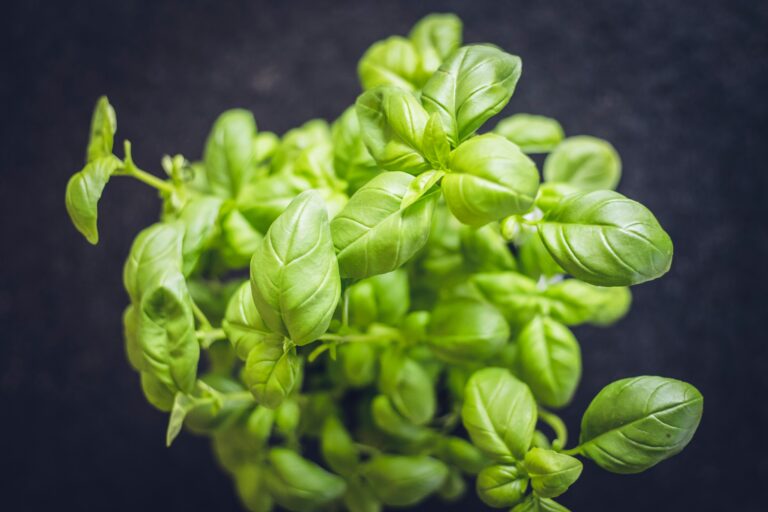Basil – also known as Ocimum basilicum or Sweet Basil – originates from Central Africa to Southeast Asia, thus it loves warm weather. Greenhouse conditions are the best if you want to grow your own. It also prefers lots of sunlight and water.
Basil is pretty a fast grower as well: you can have your fully grown, ready-to-harvest Basil in 1-2 months. It’s mature size depends on how often you harvest it. If you leave it to grow, it can reach 6 feet in height, but with usual harvesting rate, they stay around 18-24 inches.
Types of Basil:
- Cinnamon or Mexican Spice basil
- Lemon basil
- ‘Genovese’ basil
- Thai basil
Care
If you want to keep your Basil healthy, lots of sunlight and water is a very good starting point. Make sure to water it on a daily basis (good darinage is also good for your soil/pot), and ensure around 8 hours of full sunlight for it per day.
For the soil, you can use some compost as well, but it is not a must. Basil prefers rich, acidic to alkaline soil (pH 5.1 – 8.5).
The ideal temeprature for a Basil plant is between 50 and 70 degrees Fahrenheit. If the nights in your area are pretty cold, you should move them indoors. Frost damage can easily accure if you don’t pay attention to this (the leaves will turn black).
Common Pests
- Japanese beetles
- slugs
- aphids
Propagation
It’s pretty easy to propagate basil from stem cuttings. You are going to need some rich potting mix and a container where you won’t overcrowd the plant (if you are growing several plants at once, this is very important).
Once clipped the stems and removed the bottom leaves, put them into the moist potting mix. If the soil is rich enough in nutritients, your Basil should mature inte a plant in about a month or so. In case the soil is not nutritious, you need to juice it up every two weeks with liquid fertilizer.
Pruning
Before pruning your Basil, conduct a thorough inspection to ensure no signs of disease or pests are present. Take appropriate measures to treat any issues before proceeding. Start by pinching the tips. Remove the top set of leaves on each stem above the leaf node.
Remember to pinch off any basil flowers that emerge. This encourages the plant to prioritize leaf growth over flowering. Basil plants tend to go to seed and perish shortly after flowering, so eliminating the flower buds extends the plant’s lifespan.
Check out our full guide on Pruning Basil!
Frequently Asked Questions
The first step is to wash the leaves of the plant and dry them using a towel. After this, you can tie them up using their stems, and hang them in a dry, preferably cool place for 4 weeks.
How to store basil?
You can store basil for up to 2 weeks by following these easy steps:
- cut the stems at a 45-degree angle
- put the basil in a container (a jar is perfect) with water in it (halfway)
- use a plastic bag to cover the container loosely (so the leaves can breathe)
- store at room temperature for up to 2 weeks (change the water every 2 days)
Can dogs eat basil?
Yes, Basil is not toxic to pets such as dogs or cats, so they can eat it in small quantities.
Is basil a perennial?
Sweet Basil is annual, but the other types of basil are perennial.
